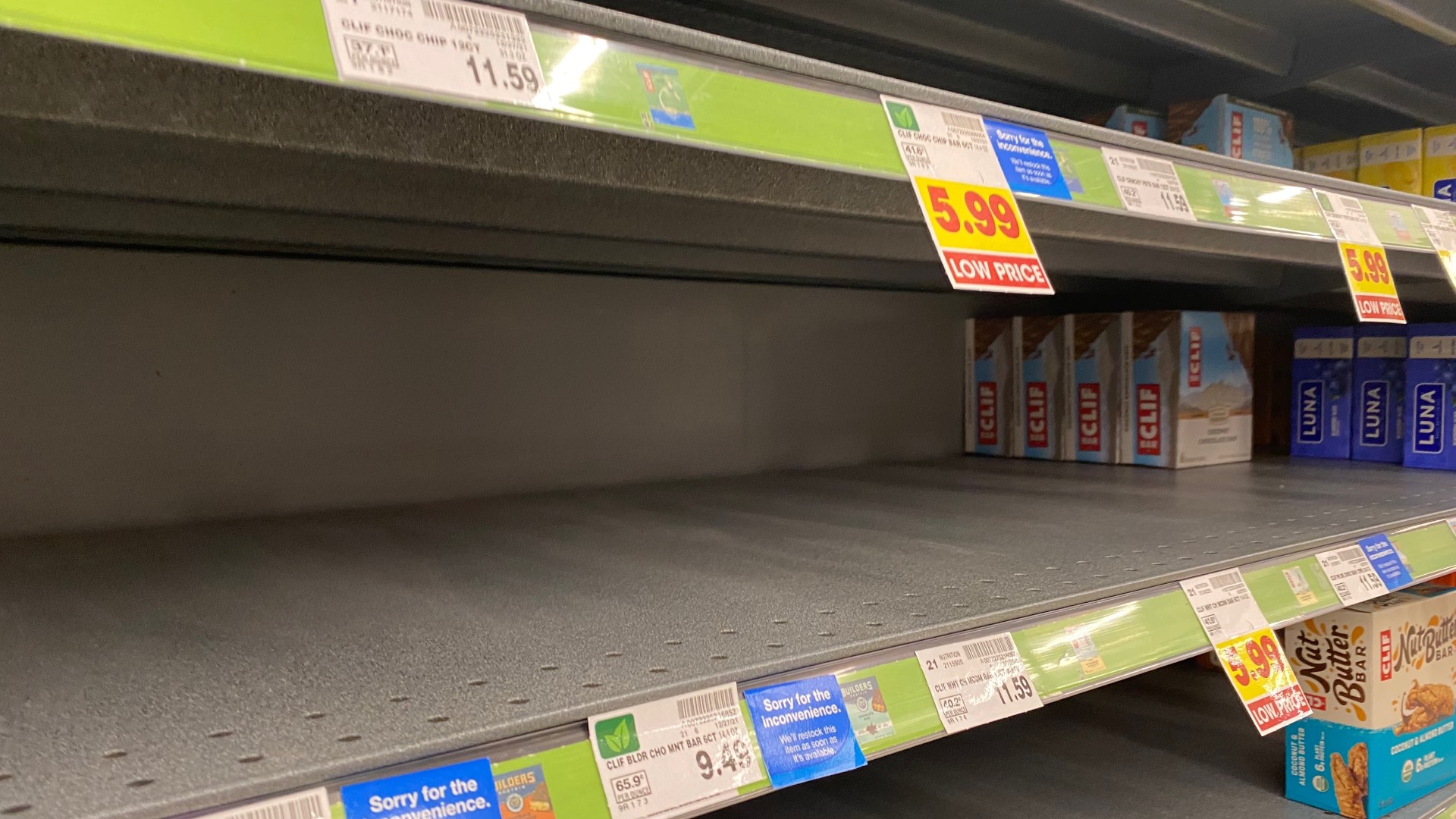COLUMBUS, Ohio — Outside a Grandview grocery store, Dan Linden holds up two cans of Skyline Chili. He said he found the last two cans in the store.
“From Cincinnati, so gotta have that for the Super Bowl,” he said.
Some items at grocery stores are in short supply. Kristen Conno couldn't find what she needs to make pigs in a blanket.
“I guess they can't get them in I asked somebody, they don't have them, they said maybe like next week? So unfortunately not for this game day,” Conno said.
Some shoppers are still getting what they need, but paying more.
“It's pretty shocking to see eggs that expensive,” said Linden. “But everything's got more expensive so it is what it is.”
"I always get black beans for my lunches and they were 30 cents more than usual for a can,” explained Nina Hoffmayer, another shopper.
From eggs to canned beans, shoppers are spending more money on just about anything and everything. Experts say there are ways you can save and that starts before you go to the store.
"Number one is looking at your fridge,” said Rachel Krych. “I know that sounds crazy. But there are so many items that people have in the back of their fridge on the side of their brain that they don't even know that they have. And I will incorporate our meal planning based on what we already have."
Rachel Krych from northeast Ohio is a mom of three and the creator of the blog: Couponing with Rachel. She said saving money comes down to two things: meal planning and only buying what's on sale. That might mean you may have to wait for what you need.
"There's something called ‘sale cycles’ with grocery stores, which means that something is on sale. Now, within four to six weeks, it's going to be on sale again. So all you need to do is buy enough items to get you through to that next sale cycle, and you'll be able to save a lot of money."
She said you can save time by using your grocery store's app to look for deals and coupons when planning your next trip.
Andrea Woroch, a consumer and money-saving expert, also offers the following 7 tips:
1. Start meal planning more strategically.
The average U.S. family throws away $1,600 worth of produce every year. Instead of buying fresh foods in bulk, purchase as you need them and plan meals for the week to cut back on waste. As you meal plan, take note of what your local store has on sale and look for recipes that use these ingredients. It’s a good idea to also look for meals that use the same ingredient to really limit any excess food that will end up in the trash. Sites like Fresh20 can help create meal plans that use just 20 simple ingredients to trim down wasteful grocery spending.
2. Opt for frozen produce over fresh.
This move will save 30% and you don't have to worry about vegetables and fruit going bad.
3. Cut the cost of convenience—skip pre-cut fruit, vegetables, cheese and other party platters and prep these foods yourself to save anywhere from 40 to 100% markup on items.
4. Buy in bulk selectively. Think about what your family will actually eat otherwise it could end up in the trash.
5. Stick with store brands for pantry staples—single ingredient items like flour, sugar and spices/herbs can not be produced any differently between a store brand and brand name.
6. Check the unit price to find the best deal—don’t assume the bigger package is a better deal as smaller containers can be cheaper when you buy multiple on sale.
7. Use the right credit card—check which credit cards will give you the most rewards on your grocery purchases or if your card gives you more cashback for a certain big-box chain or grocery store. Otherwise, look for a new grocery rewards card at CardRates.com.

